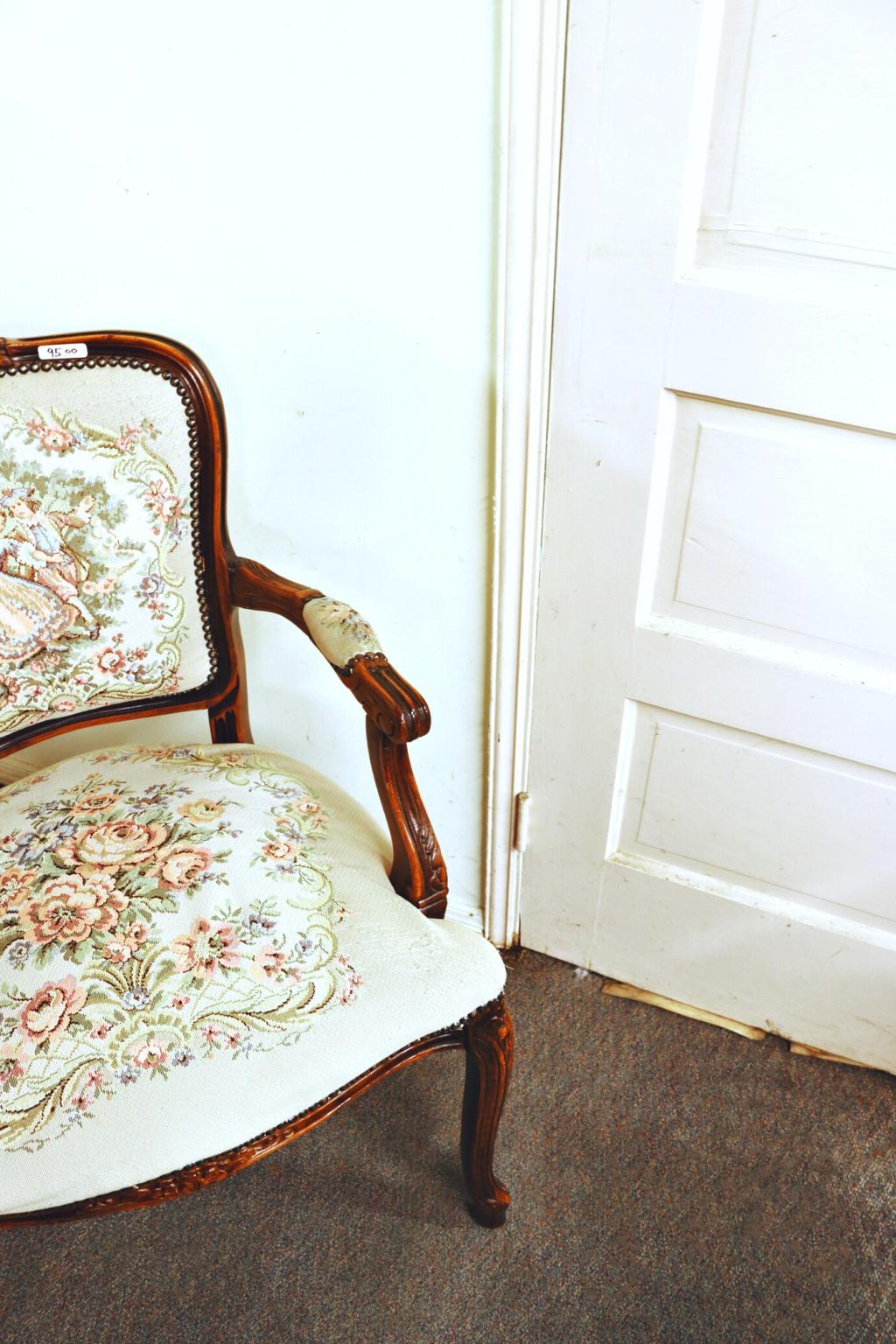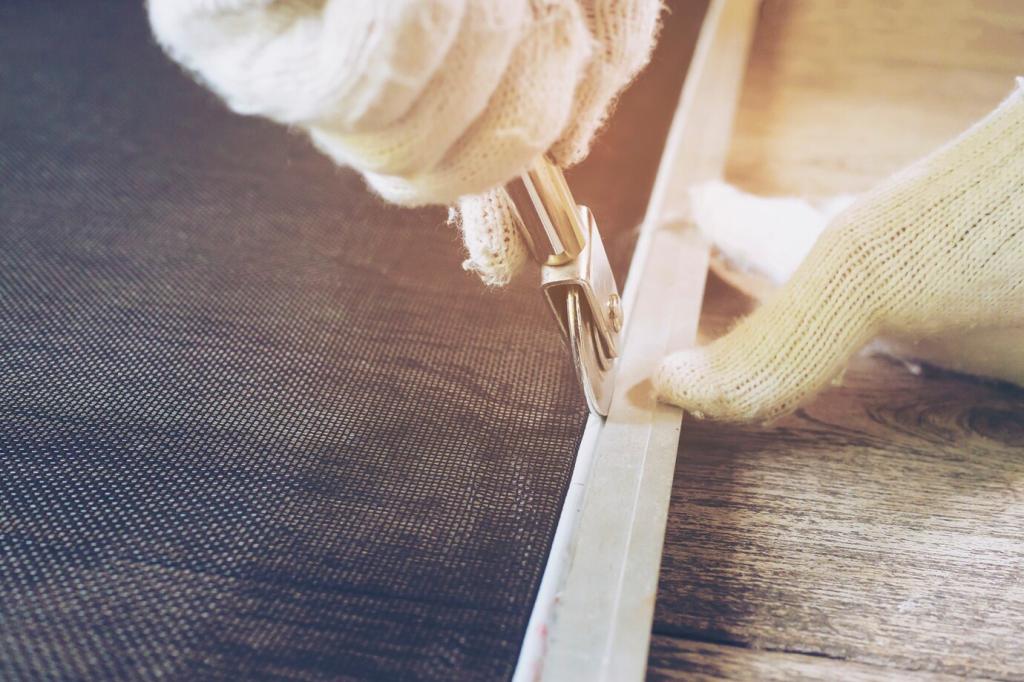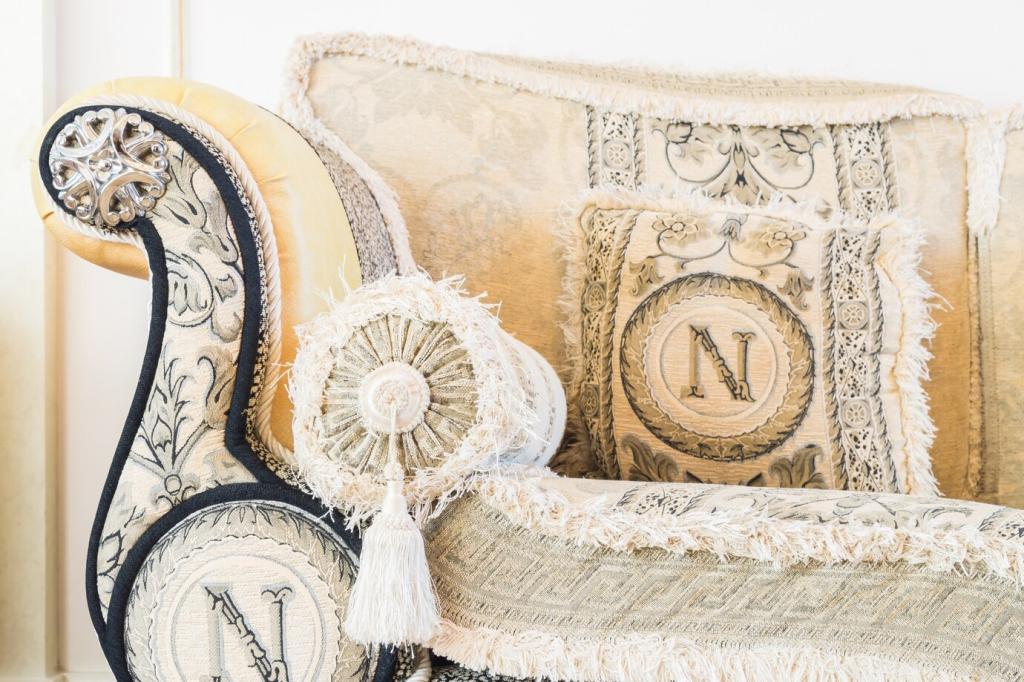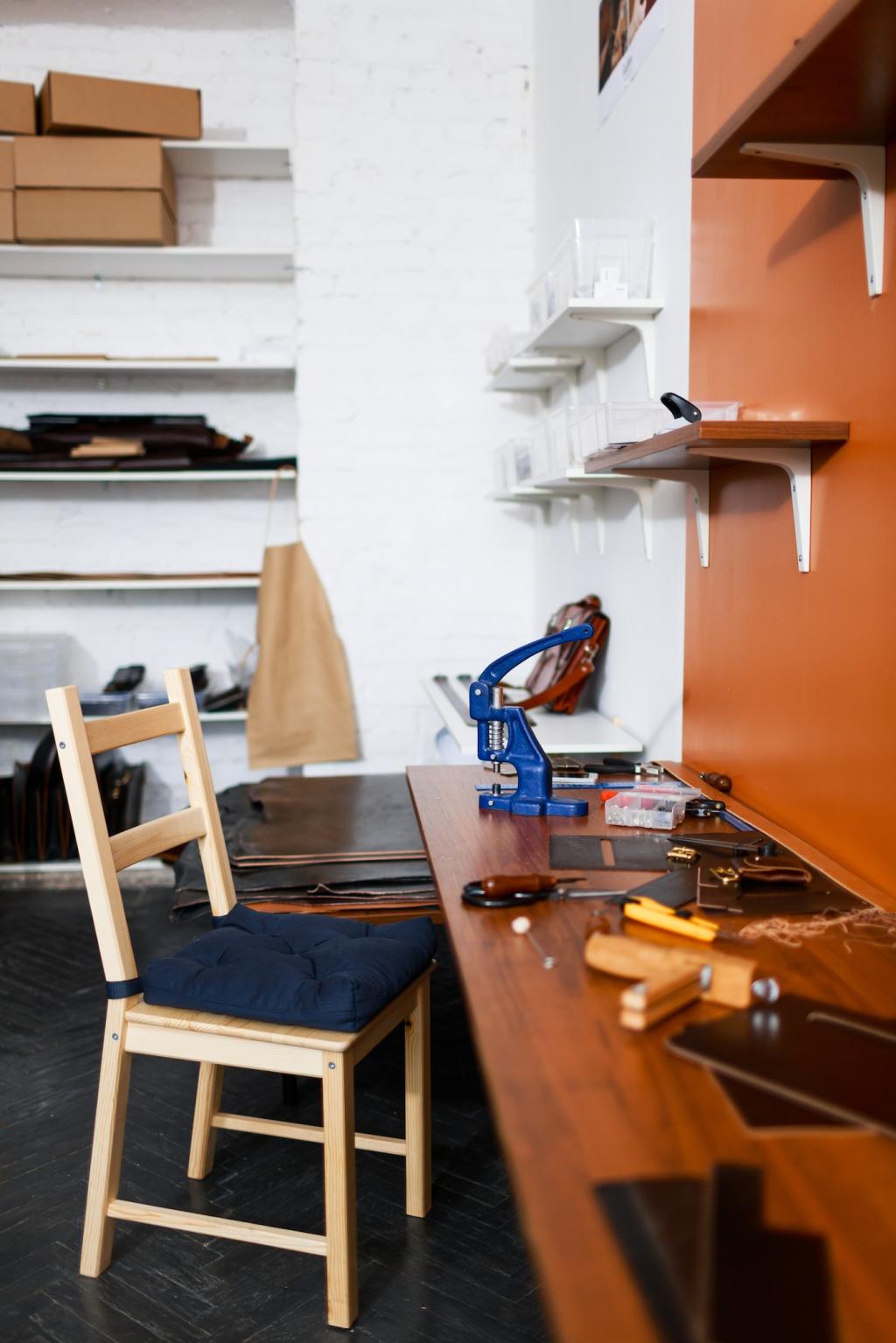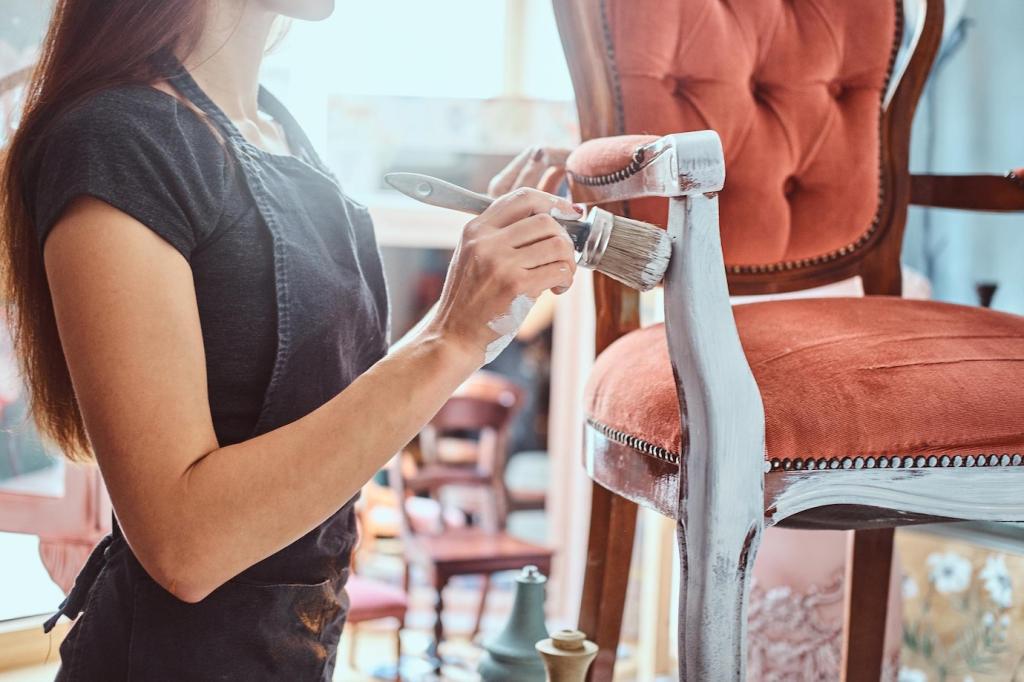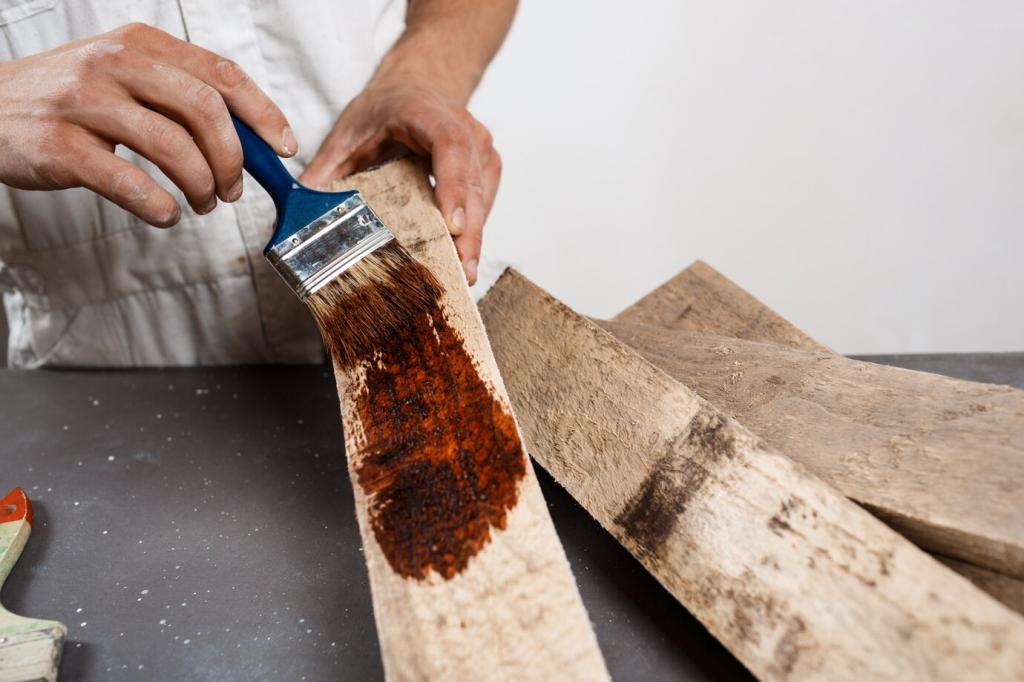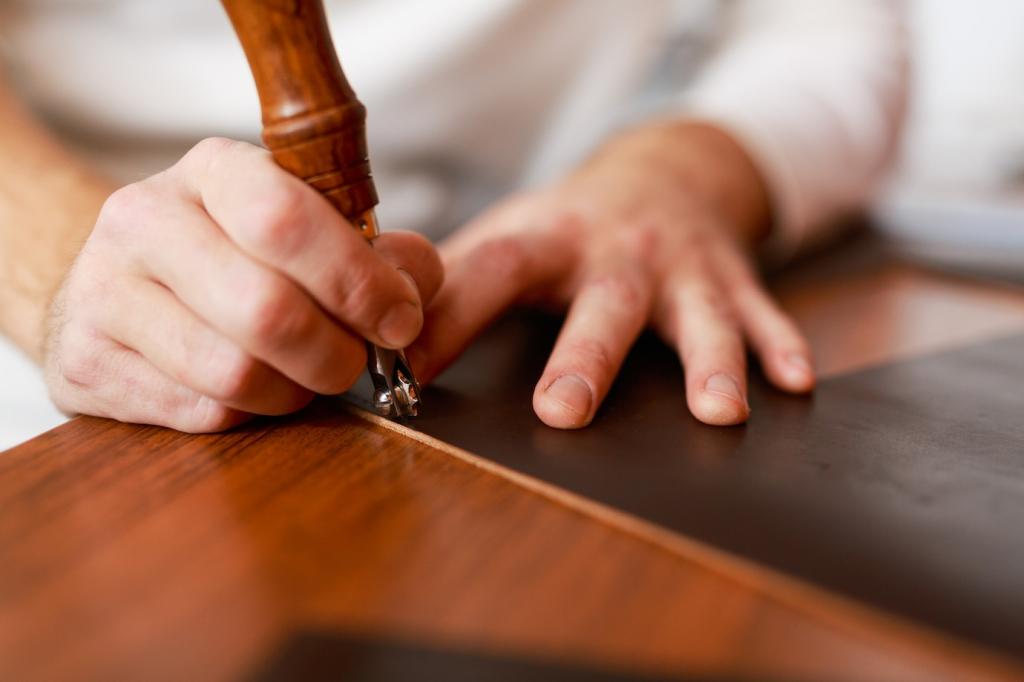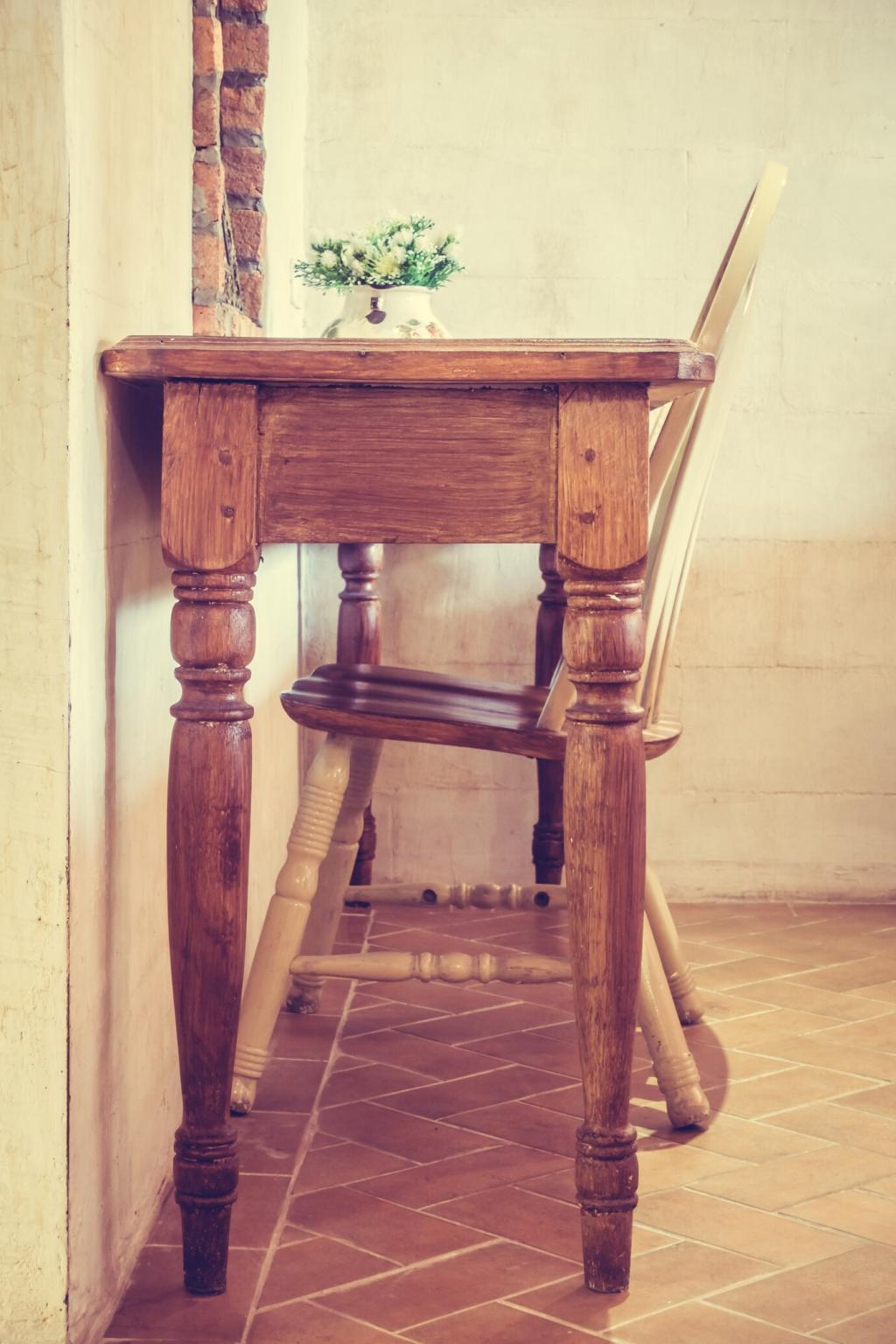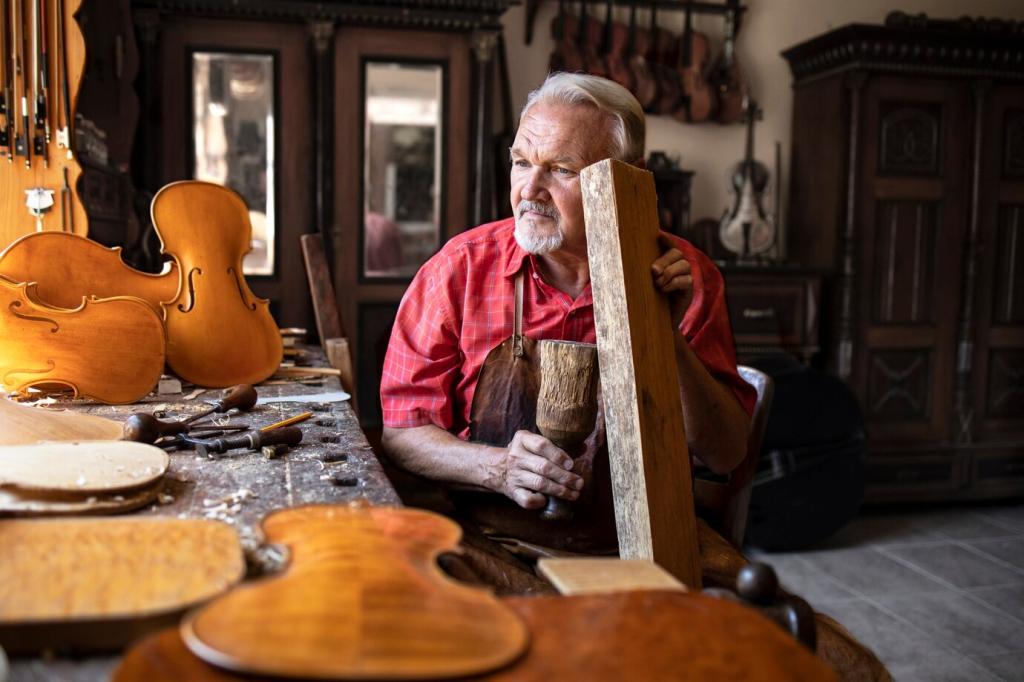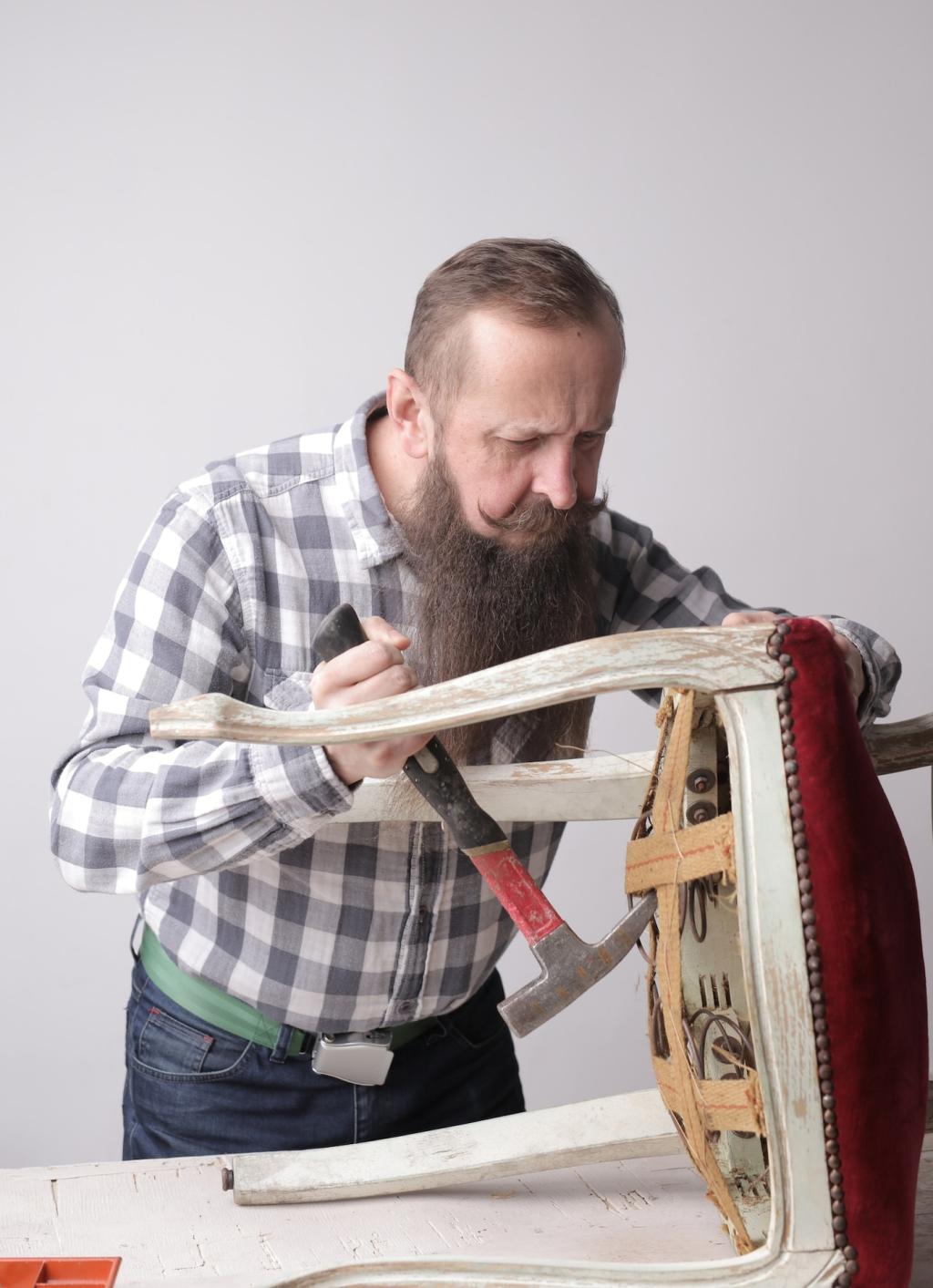Finding and Evaluating Vintage Pieces
Explore estate sales, thrift stores, auctions, and neighborhood curb alerts, and always bring a tape measure, flashlight, magnet, and notepad. Check dimensions for doorways, inspect undersides, and snap quick photos. A small toolkit makes negotiation easier because you look prepared and confident.
Finding and Evaluating Vintage Pieces
Look for dovetail drawers, mortise-and-tenon joints, and screw types that suggest age. Solid wood has grain continuity at edges, while veneer shows a thin layer over substrate. Quarter-sawn oak reveals shimmering ray flecks that vintage lovers prize for strength and visual depth.

